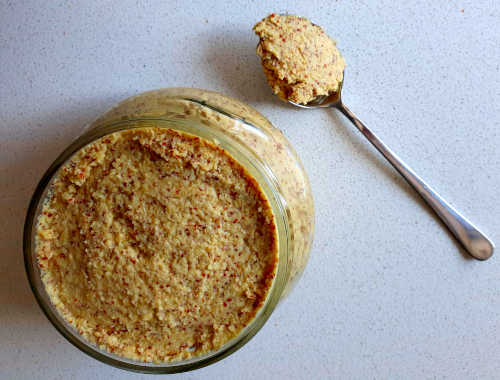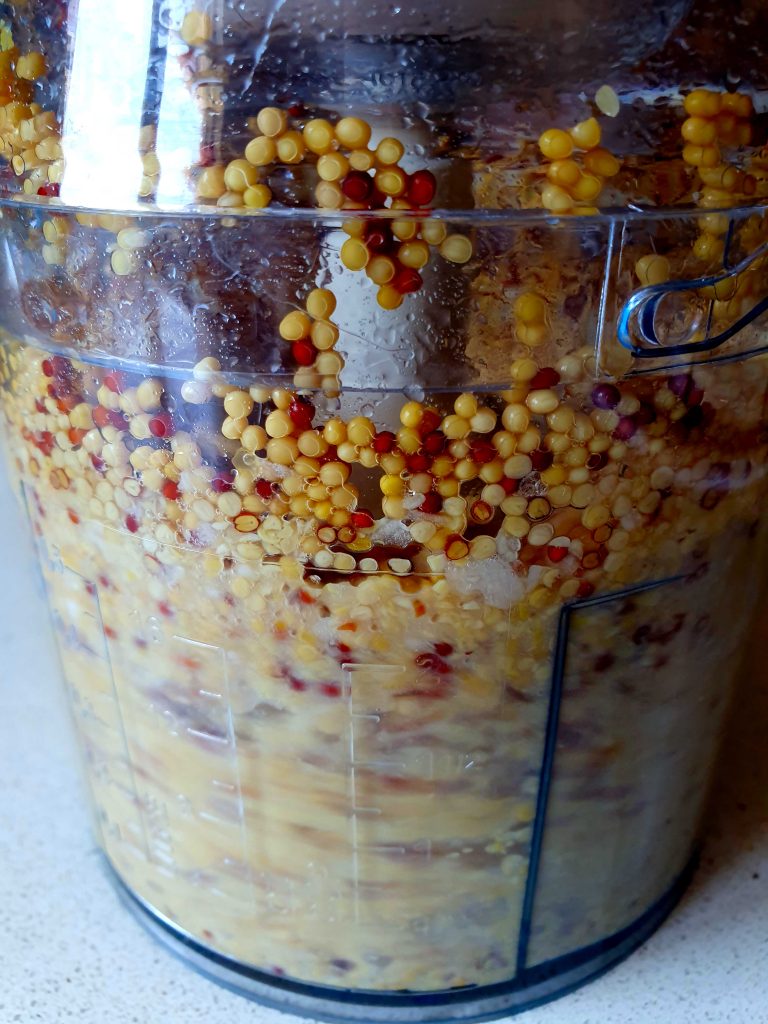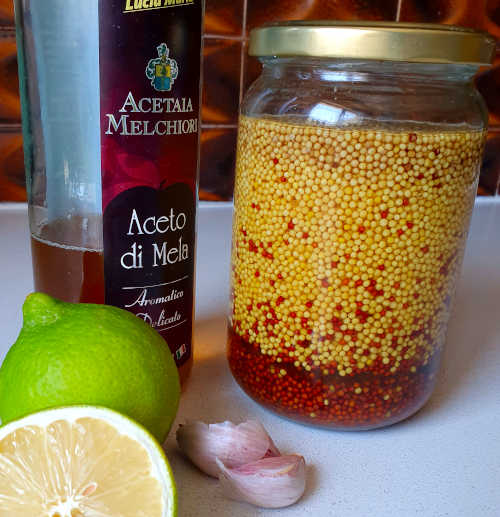Last night I invited friends to a “lively” hot dog dinner. The meal included homemade hot dogs, sauerkraut and fresh rolls. I took out a selection of fermented sauces that I made over the last period, fermented ketchup from fermented tomatoes, fermented hot sauce, and Amba sauce. Suddenly I noticed that the mustard I use is industrial. I immediately decided that

Making your own homemade mustard is great because you can control the heat level, acidity,
Classic Lacto fermented mustard is perfect for eating with hotdogs, sandwiches, marinade for meat and fish, mixed with olive oil and lemon juice to make grate vinaigrette for a salad. Another cool use I found for fermented mustard is to add it to some cashew cream cheese for an extra flavor.

To start the fermentation process, the dry mustard seeds should be soaked in brine. The water revives the enzymes from the dried mustard seeds, which will create the sharp flavor that mustard is known for. Another factor that influences the flavor of the fermented mustard is the temperature of the water. You should use cold water for a hotter mustard sauce, and warm water for a more mellow mustard sauce.
Types of mustard
This recipe makes just two cups worth of mustard, and there are many types of mustard that can be made from this Recipe:
- Honey Mustard- Add 1/4 cup of raw honey for a sweet, tangy, and creamy sauce.
- Hot Mustard- Add leftover hot sauce brine for a spicier mustard
- Horseradish Mustard- Add 3 tablespoons of chopped horseradish to give every bite a little extra flair.
- Beer Mustard- Replace all of the apple cider vinegar with beer.

Making nice smooth mustard will require a good food processor and will take a while for the mustard seeds to open up and blend with all of the other ingredients. I let the food processor go for about ten minutes, and check every two minutes if the texture is what I’m seeking.
Ingredients
- 1 cup yellow mustard seeds
- 1/4 cup whole brown mustard seeds
- Water
- 1/2 cup Apple cider vinegar
- salt
- 1/2 tsp turmeric powder- (Turmeric is what makes mustard yellow)
- 1 tbsp mustard powder
- 1/4 tsp paprika
- 4 garlic cloves

Ingredients
Instructions
- Transfer the yellow mustard seeds into a glass jar.
- Place the jar (with the yellow mustard seeds inside) on the digital weight, and reset the weight.
- Add 6% kosher salt (6g of salt per 100g of water) to the jar.
- Leave 3-5cm of space between the lip of jar and brine.
- Close the jar tightly and set aside for 10 days. In the first three days, a pressure of 2CO is created inside and it is recommended to open and release the pressure twice a day.
- Mix in the remaining ingredients. Using a blender or an immersion blender grind the seeds to the desired consistency.
- Store in the refrigerator in a glass jar. This should last in the fridge for at least 6 months.
This site is a participant in the Amazon Services LLC Associates Program and contains affiliate links to products. We may receive a commission for purchases made through these links.